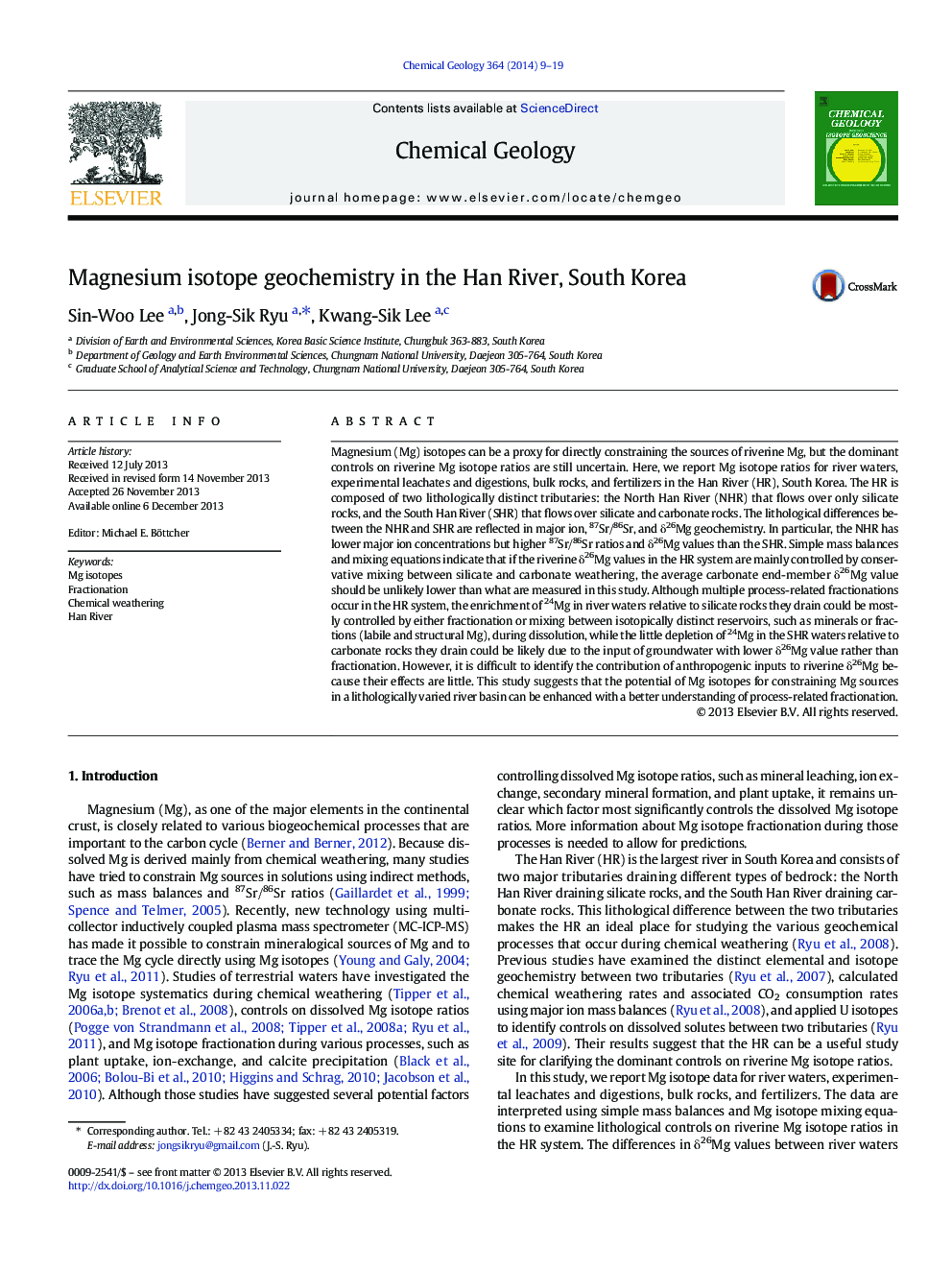| کد مقاله | کد نشریه | سال انتشار | مقاله انگلیسی | نسخه تمام متن |
|---|---|---|---|---|
| 4698879 | 1637606 | 2014 | 11 صفحه PDF | دانلود رایگان |
• We studied Mg isotope geochemistry in the Han River, South Korea.
• Lithological differences are reflected in elemental and Sr isotope geochemistry.
• However, fractionation during silicate dissolution controls δ26Mg in the NHR.
• While, groundwater input may affect δ26Mg in the SHR.
Magnesium (Mg) isotopes can be a proxy for directly constraining the sources of riverine Mg, but the dominant controls on riverine Mg isotope ratios are still uncertain. Here, we report Mg isotope ratios for river waters, experimental leachates and digestions, bulk rocks, and fertilizers in the Han River (HR), South Korea. The HR is composed of two lithologically distinct tributaries: the North Han River (NHR) that flows over only silicate rocks, and the South Han River (SHR) that flows over silicate and carbonate rocks. The lithological differences between the NHR and SHR are reflected in major ion, 87Sr/86Sr, and δ26Mg geochemistry. In particular, the NHR has lower major ion concentrations but higher 87Sr/86Sr ratios and δ26Mg values than the SHR. Simple mass balances and mixing equations indicate that if the riverine δ26Mg values in the HR system are mainly controlled by conservative mixing between silicate and carbonate weathering, the average carbonate end-member δ26Mg value should be unlikely lower than what are measured in this study. Although multiple process-related fractionations occur in the HR system, the enrichment of 24Mg in river waters relative to silicate rocks they drain could be mostly controlled by either fractionation or mixing between isotopically distinct reservoirs, such as minerals or fractions (labile and structural Mg), during dissolution, while the little depletion of 24Mg in the SHR waters relative to carbonate rocks they drain could be likely due to the input of groundwater with lower δ26Mg value rather than fractionation. However, it is difficult to identify the contribution of anthropogenic inputs to riverine δ26Mg because their effects are little. This study suggests that the potential of Mg isotopes for constraining Mg sources in a lithologically varied river basin can be enhanced with a better understanding of process-related fractionation.
Journal: Chemical Geology - Volume 364, 22 January 2014, Pages 9–19
